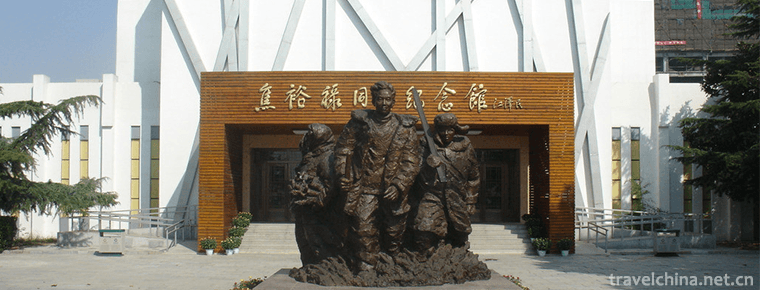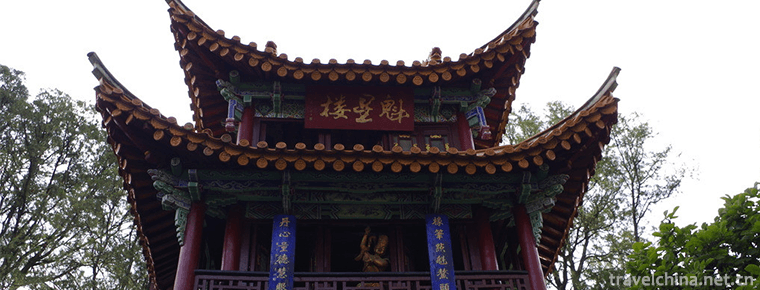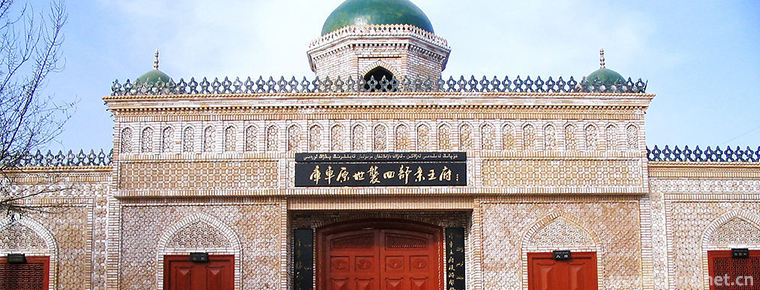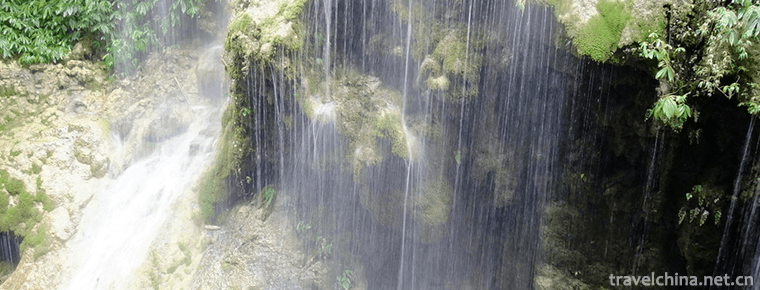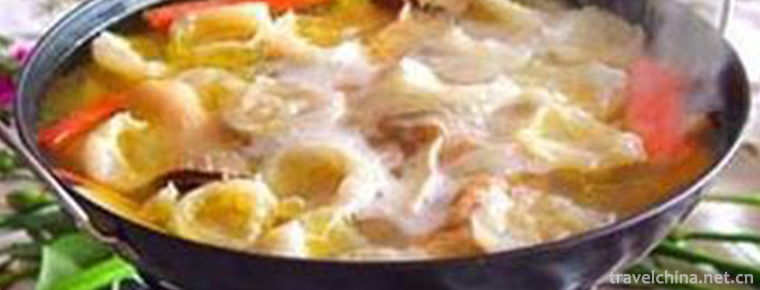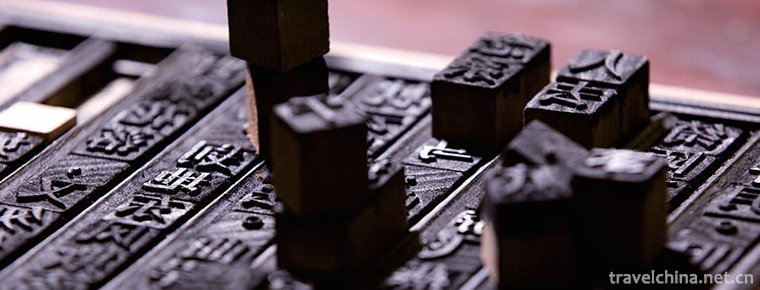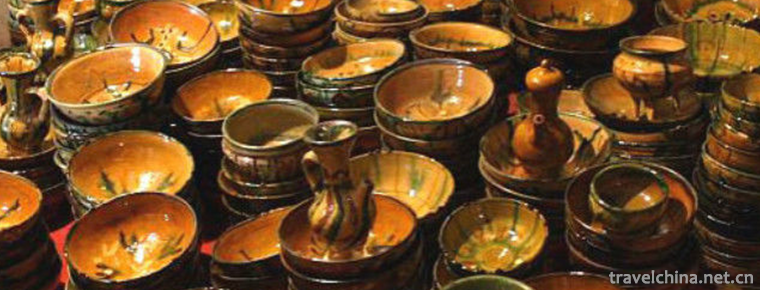Yicheng Flower Drum
Yicheng Flower Drum
Yicheng Huagu, a local traditional dance in Yicheng County, Shanxi Province, is one of the national intangible cultural heritage.
Yicheng Huagu, according to historical records, existed during the Zhenguan period of the Tang Dynasty, reached its peak in the Ming Dynasty, and only in the Qing Dynasty did this activity have a clear record.
On May 20, 2006, Yicheng Huagu was approved by the State Council to be included in the first batch of national intangible cultural heritage list, project number: III-11.
historical origin
origin
According to historical records, during the Zhenguan period of the Tang Dynasty, there were Yicheng flower drums. On the plaque of the Yangjiaci Temple in Yicheng, it was written: "Taizong of the Tang Dynasty was sitting in Chang'an City, and the people of Li were very happy. Every year, there was a Lantern Festival, the state was calm, the people were happy, the people of Guotai welcomed the Spring Festival, and the flower drums were beating enthusiastically." The deposit is the first month of the third year of Zhenguan in the Tang Dynasty.
"Yicheng Chronicle" (National Relatives Volume) contains: "Empress Dowager Li returned to Yicheng Province during the Ming Wanli Dynasty to appreciate the flower drum silver 32,000. It can be seen that the flower drum in Jicheng existed before Wanli in Ming Dynasty.
Development
The flower drums in Yicheng city have been popular since the Ming Dynasty. According to local legend, during the Wanli period of Ming Dynasty, Li Niangniang, the mother of Wanli Emperor, grew up in Xiguancun. When she returned home, Yicheng organized many social activities to welcome her. Among them, Li Niangniang was very interested in flower drums, and after seeing them, she awarded three thousand and two silver pieces on the spot. From then on, Yicheng flower drums came out. Name, the more hot, the better.
The first page of Yicheng Chronicle (National Qi Volume) in the 16 years of the Republic of China and the 30th page of Yicheng Chronicle (Ancestral Hall Sacrifice Volume) in the 16 years of the Republic of China, as well as the ancestral sacrifice volume of Yicheng Chronicle in the 16 years of the Republic of China, are recorded. It is said that Queen Li Wanli (Yicheng Xiguan people) returned to Yicheng to pay tribute to her ancestors after her father's death to celebrate the Lantern Festival. After watching stilts, lions, Yangko, flower drums and many other programs, Fire Ling was particularly interested in Yicheng flower drums, so he rewarded the performers with three thousand two silver on the spot.
The origin of Yicheng flower drum is closely related to temple fairs, competitions, associations and social fires. Most of these activities must be inseparable from the opening of flower drums. By the Qing Dynasty, this activity had been clearly recorded. During the Qing Dynasty and the Republic of China, Yicheng flower drum has become one of the most important programs in celebrating harvest, Festival celebrations, temple fairs and sacrifices. People engage in sacrifices year after year and make communal fires year after year, which promotes the development and spread of Yicheng flower drum. The so-called "walking around the northwest and southeast of the city and hearing the sound of flowers and drums everywhere" is a true portrayal of this situation.
From the Qing Dynasty to the present, Yicheng flower drum has become a routine performance form for people to celebrate harvest and worship ancestors. The so-called "walking around the northwest and southeast of the city, everywhere hear the sound of flower drums" is a true portrayal of this situation.
Dance features
Performing Form
The performance form of Yicheng flower drum is mainly square performance. There are mainly the following kinds: the first kind is the performance of drummer with female Miaozi (Danjiao) and clown. First, the drummer takes the girl Miaozi and the clown to run in various formations, then the drummer plays a flower drum alone. After stopping playing, the girl Miaozi and the clown sing a short tune, and then the Gong starts to perform again. This form of adaptability can be long or short, usually in the "hot" performance. Before liberation, Miaozi was played by male actors. It took a lot of time not only to make up her head, but also to dress up carelessly so as not to show her big feet. Generally, they wear crowns on their heads, embroidered colored clothes on their upper bodies and embroidered dresses on their lower bodies. After liberation, the girl Miaozi was played by a young girl, who only needed simple makeup. The clown's clothes are quite messy, and even somewhat irregular. They are usually dressed in three-faced clothes. They usually wear safflower jackets, fat trousers or the clothes of Monkey King in similar dramas. They wear cold hats or straw hat rings of various shapes. Miaozi and the clown cooperate with each other, jumping back and forth, teasing and attracting each other, sometimes "two dragons bite their tails" and "two dragons play with water", sometimes "scissors" and "wind whipping snow" and so on.
The second one is to show a group of male drummers without seedlings and clowns. This form is crisp, quick and quick, the drum point is very urgent at the beginning of the play, while switching the formation quickly, the whole performance from the exit to the exit of a ring buckle, clear action and music card level, rough and brave performance, generally within five minutes to complete all the movements.
The third is stilts and bars. The drummer walks the circle on stilts, and the skilled drummer walks on stilts and splits, then gets up and continues to perform. When performing on the upper pole, several players put on a pole and climbed up like monkeys to perform. Such as "Wine in the Air", "Fairy Crossing Bridge", "Scorpion hanging upside down", "Tiger opening mouth" and so on. There are also stilts-free performances in this form. In addition to this, there is the performance of the drum-to-drum performance, commonly known as "Erlong Drama Pearl", the specific method is: two drummers bite the two ribbons on the drum and pull back, so that the drum is suspended in the air, alternately fighting each other, while using the skills of turning around, kneeling, pulling out legs and so on.
Performing Characteristics
Motion characteristics
According to the different positions of the performers, the Yicheng flower drum is different from the high drum, the middle drum and the low drum. The right drum is tied to the right drum, the left drum is tied to the chin, the drum is slightly slanted to the chest, and the low drum is located at the waist.
Yicheng Flower Drum began as a drum performance, tied the drum in front of the chest, high left low, sloping, two hands with drumsticks beating on both sides of the drum alternately, each beat twice, the right hand beat strongly, the left hand beat weakly, beat a drum, both hands using wooden hammers, accompanied by gongs, dull gongs, small cymbals. Later, it developed into a multi-drum performance, which was performed by a skilled drummer with drums tied to his head, shoulders, chest, waist, back, legs and feet.
Generally, at least three drums are hung, three drums are a head drum, one shoulder drum and one chest drum; five drums are a head drum, one shoulder drum, one chest drum and two waist drums; seven drums are a head drum, one chest drum, one shoulder drum, two waist drums and two leg drums, called "Star Fighting"; nine drums are combined with two feet drums. 。 A soft rope made of tendon or hemp rope is used in the right hand of a drum. In the multi-drum performance, the drummer comes out first and then draws out the multi-drummer. When they step back and enter the center of the court, the drummer flashes aside to cheer the drummer and let the multi-drummer begin to perform his skilled and exquisite drumming skills. Because there are many drums hanging on the drummer, it is not easy to move the position substantially, so they are mostly performed on the original surface. Audiences can see the artist's hands on the body up, down, left, right, front and back flying fast winding, whether it is squatting, running up, left-to-right turn, twisting waist, shaking shoulders, kicking and stamping feet, drum points are always clear and loud, continuous. Another way of playing flower drum is to slant the drum on the waist. The drum hammer is similar to the waist drum, and the wrist and arm move fast.
Flower Drum Singing Tune
The tune of Yicheng Flower Drum is mostly a local folk song, led by the flower drummer or Nvmiaozi. The crowd is in harmony. No band accompaniment is needed. The tune is mastered by the lead singer, and the content of the song is not closely related to the dance. "Flower Drum" is the main musical instrument of Yicheng Flower Drum and also the prop of dance. The leading instrument is the gong, also known as the "flower gong". It plays a commanding role in dance. Although it also joins the performing ranks, it mainly serves as the accompaniment. Dull gongs, also known as gongs, are used as auxiliary instruments to set off the atmosphere of gongs and drums by beating flowers. There are eight basic gongs and drums with flexible connection, but there are certain rules. "Wuliushui" is mostly used for opening, and "Moving Siyi" is mostly used for ending, while the rest of the gongs and drums are used for changing formation and action. Hualiushui is the variation and development of Wuliushui. On the basis of the basic points of 8 beats, the rhythm can be changed arbitrarily. It is the transition of changing points.
Inheritance and Protection
Inheritance value
Yicheng flower drum has been handed down from generation to generation, and it is closely related to the production and life of the local people. It provides a valuable historical material for future generations to understand the social changes and historical evolution of ancient Yicheng. At the same time, it is also one of the important research topics in the fields of musicology and folklore. On the occasion of China's 50th anniversary celebration, the Yicheng Flower Drum was performed in Tiananmen Square. Digging, sorting out and protecting Yicheng flower drum will play a positive role in further enriching folk dance.
When spring ploughing is about to begin, people use the seismic gongs and drums, vigorous rallies and parades to wake up the earth, urge spring ploughing, and wish the new year good weather and good harvest. Therefore, the flower drum has become the spiritual power of the farming nation, which contains the wishes of blessing and praying for a bumper harvest and happiness. In addition, there are also large-scale flower drums in the temple meeting. This kind of mass gathering is a grand traditional folk cultural entertainment.
Heritage figures
Yang Zuoliang, male, Han nationality, born in 1938 in Yicheng, Shanxi Province. The second batch of national intangible cultural heritage project Yicheng Huagu representative inheritor, Yicheng County, Shanxi Province, declared the project: Yicheng Huagu.
Zhang Feifei, male, is the representative inheritor of the fifth batch of national intangible cultural heritage project Yicheng Huagu. Yicheng County of Shanxi Province declares the project: Yicheng Huagu.
protective measures
In order to strengthen the protection and inheritance of "Yicheng Flower Drum" as a national intangible cultural heritage, Yicheng County established "Flower Drum Art Teaching and Research Training Base of Cultural Museum" and "Flower Drum Base of Star Culture and Art Training Center" in April 2006. Rental rooms, purchase of facilities, performance equipment, hired teaching and research, teaching and management personnel.
The Flower Drum Program Team of Beiguan Demonstration Primary School was founded in 1985. At first, there were more than 40 drummers, dancers and musicians. Later, veteran artist Zhang Zengfa was hired to teach flower drum skills. Beiguan Demonstration Primary School updates and trains a batch of flower drum players every two years, each batch of 40-80 people. Flower Drum Team has participated in Shanxi Province and the national folk dance, Gong and drum contest and art festival performances for many times.
social influence
Important activities
In 1999, the Yicheng flower drum was displayed at the 50th anniversary of the National Day of Tiananmen Square in Beijing.
In 2004, Yicheng Huagu participated in the Spring Festival Literature and Art Gala of the Ministry of Culture.
In October 2006, Yicheng Huagu participated in the performance of CCTV China National Folk Song and Dance Festival.
Honorary recognition
In 2005, Yicheng Huagu won the gold medal for performance at the first International Yellow River Chorus Festival in China.

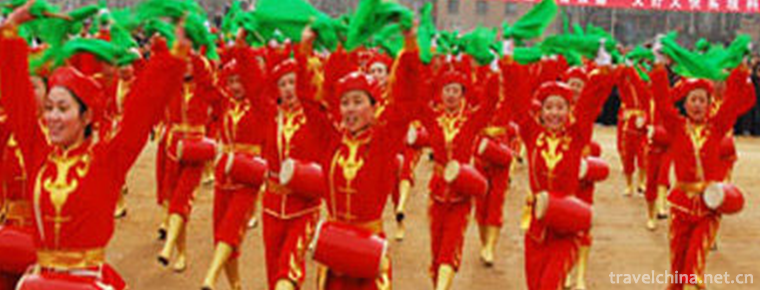
-
Great Wall of Ming Dynasty in Datong County
According to documents, the Great Wall of Qinghai Province in the Ming Dynasty was built in the middle of the Ming Dynasty. It lasted 51 years from 1546 to 1596..
Views: 160 Time 2019-01-07 -
Jiao Yulu Memorial Park
Jiao Yulu Memorial Park (formerly Jiao Yulu Martyrs Cemetery) was built in February 1966. It is located on the old embankment of the Yellow River in the north of Lankao County, Kaifeng City.
Views: 153 Time 2019-01-22 -
Jindian Scenic Spot
Kunming Golden Palace Scenic Spot, also known as Tongwa Temple, is made of brass and shines in the sunshine, reflecting the golden brilliance of Cuigou Youlin.
Views: 161 Time 2019-01-22 -
Kuqa Wangfu Scenic Area
Located in Kuqa County, Xinjiang, the "Kuqa Wangfu" was built by Emperor Qianlong of Qing Dynasty in 1759 by dispatching Han craftsmen from the mainland in order to commend the local Uygur l.
Views: 151 Time 2019-01-29 -
Water Curtain Gorge Scenic Area
Shuixian Gorge Scenic Area is located in the southern mountain area of Jinan, Liubu, the first town of ecotourism in Shandong Province. Covering an area of more than 6000 mu, Jinan's No. 1 Peak Ladder.
Views: 171 Time 2019-02-13 -
Fish Swallow in Bazhen Fresh Soup
Ingredients: Six or two fish swallows are served well. Lentinus edodes, crab willow, Jinhua ham, clam, shrimp.
Views: 200 Time 2019-03-27 -
Ancient Platform Building Skills
Architectural skill of ancient stage is an important traditional skill in folk architecture. In the traditional techniques of ancient stage construction, sawyers, big woodworkers, small woodworkers.
Views: 147 Time 2019-05-01 -
Jieshou Book Club
The first book of the world will be a national list of intangible cultural heritage. Miaohu Book Club in Jieshou City is a unique bonsai project in its culture and art..
Views: 111 Time 2019-05-06 -
Wood movable type printing technology
Dongyuan Village is located in the southwest of Ruian City, Zhejiang Province. According to the local "Wang's genealogy of Taiyuan County", in the early Yuan Dynasty, Wang Famao, a hermit in.
Views: 114 Time 2019-06-06 -
Uygur moulding earthenware firing
Uygur moulding pottery has a history of more than two thousand years. After the middle of the ninth century, Uygur ancestors moved westward to the vicinity of the Tarim Basin, inherited the pottery ma.
Views: 184 Time 2019-06-26 -
Peking University
Founded in 1898, Peking University was first named as Beijing Normal University Hall. It was the first national comprehensive university in China and the highest educational administrative organ at th.
Views: 245 Time 2019-08-30 -
Da Zang Temple
Located in the north of malkang County, dazang temple is about 500 kilometers away from Chengdu City and is located in the deep mountains above 3000 meters above sea level. .
Views: 243 Time 2020-11-07

